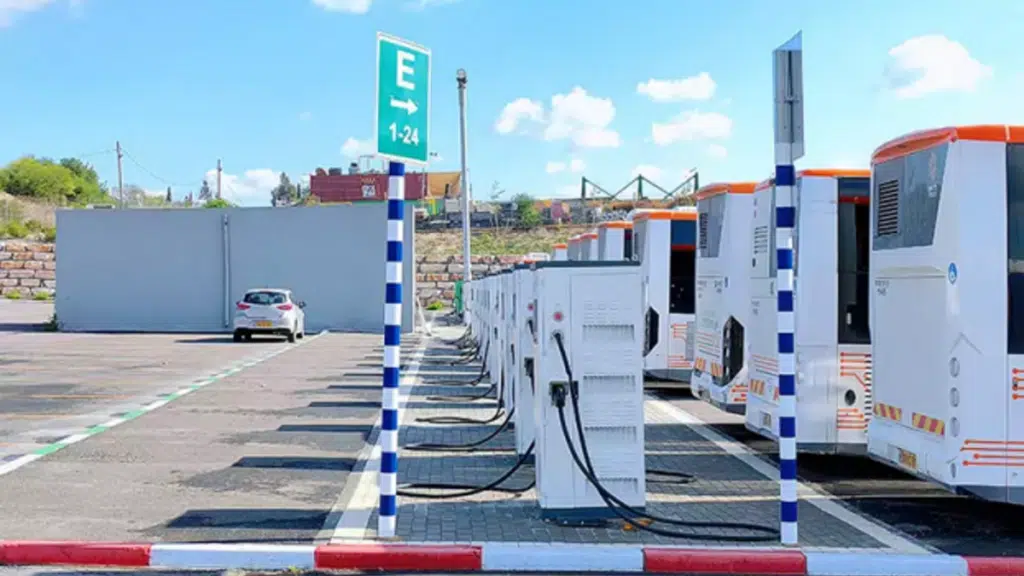Because of its benefits in terms of economics, driving range, and environmental preservation, electric cars (EVs) are becoming more and more popular. The adoption of EVs not only contributes to a decrease in greenhouse gas emissions and an improvement in air quality, but they are also an affordable long-term travel choice due to their steadily increasing range and cheap maintenance costs.
Making the switch to environmentally friendly transportation requires an understanding of how electric vehicles are charged and how they operate. This entails choosing the right EV charging station in addition to being aware of charging duration, efficiency, and ways to extend battery life. This post will go into great detail on “How do electric car chargers work?” Continue reading to find out more!
EV charging: what is it?
The process of transforming external electrical energy into electrical energy that an electric vehicle’s battery can use to power the motor is known as “EV charging.” This energy is then stored in the battery.
Charging stations, cables, controllers, connectors, and sockets make up the majority of the EV charging system. Together, these parts provide the secure transition of electrical power from the power source to the battery.
With the help of this simple explanation of “how EV charging stations work,” EVs may travel without emitting any pollution and without using fuel. Significant long-term cost savings are another benefit of charging. This is because electricity is significantly less expensive per mile than fuel.
Electric vehicle charging types
How do chargers for electric cars operate? Examining the various EV charging options is essential to comprehending this process. The power outputs and charge durations of these kinds differ. Among them are:
EV Charging at Level 1
Home 120V power outlets are used for Level 1 EV charging. It can extend the range by roughly 3-5 miles per hour and has a power range of 1kW–1.8kW.
The slowest charging technique is this one. However, this method can be employed for long-term parking or overnight charging because to its affordability and convenience.
EV Charging at Level 2
Refueling with an AC EV charger is substantially faster when using Level 2 EV charging, which uses 240V AC electricity. Depending on the vehicle’s and charger’s efficiency, an AC charger can provide a full charge in 4–6 hours at a power of 3.7–22 kW.
This charging technique, which offers a moderate charging speed, is appropriate for workplace and commercial use.
EV Charging at Level 3
Level 3 EV charging, often known as DC fast charging, uses direct current to increase the power of EV charging. It can increase battery capacity by more than 80% in a matter of minutes.
Because of this, Level 3 chargers are perfect for public charging stations and rest areas. When charging for short periods, certain powerful fast charging stations can manage DC power levels up to 600kW, which maximizes driving range.
How Do Charging Stations for Electric Cars Operate?
How function do EV chargers? EV charging stations carry out intricate tasks to securely and effectively supply power to cars. There are five main processes that an EV charger typically follows:
Attach the power source.
First, a charging cable is used to connect the vehicle’s charging port to the charging station. To avoid an unintentional disconnect during this procedure, electric cars will lock the charging gun. Thus, be careful to shut off the power source before stopping the charging process.
Energy Conversion and Input
Following that, AC electricity is drawn from the grid via AC charging stations, and the vehicle’s onboard charger transforms it into DC power. Since the car does all of the power conversion internally, this process is somewhat slow.
Because DC charging stations feature built-in power converters that can deliver more power and faster charging speeds, they can directly supply DC power to EVs.
Communication with the Battery Management System (BMS)
The temperature, voltage, and battery level of the charging battery may all be observed via the battery management system.
To provide a safe charging procedure, BMS talks with the charger during the charging process. To prevent or lessen the impact on the battery, BMS will additionally modify the charging method based on the battery state.
Finalization of Charging
The car charger will automatically switch off the power after EV charging is finished to avoid overcharging. Information about electricity consumption and cost can be accessed by users via mobile applications or charging station displays. These comprise the entire “How do electric car chargers work?” procedure.
Conclusion
Understanding the basics of “how do electric car chargers work” will help drivers make appropriate choices when selecting charging facilities and operate correctly during the charging process. Whether at home, work, or on long trips, reliable EV charging solutions from brands like Luobinsen can address all needs.
As charging technology continues to advance, EVs will become even more practical and affordable transportation solutions. To browse the full range of Luobinsen AC and DC EV chargers and learn more about “how electric car chargers work,” contact them now!


